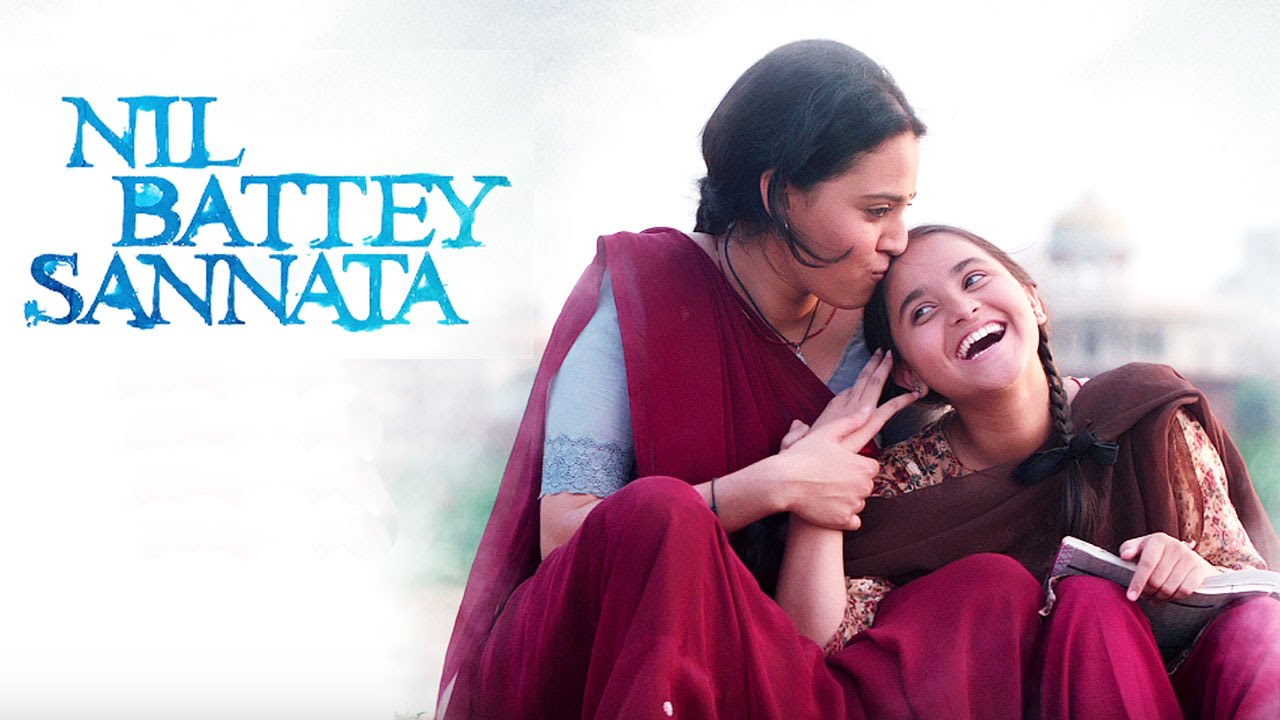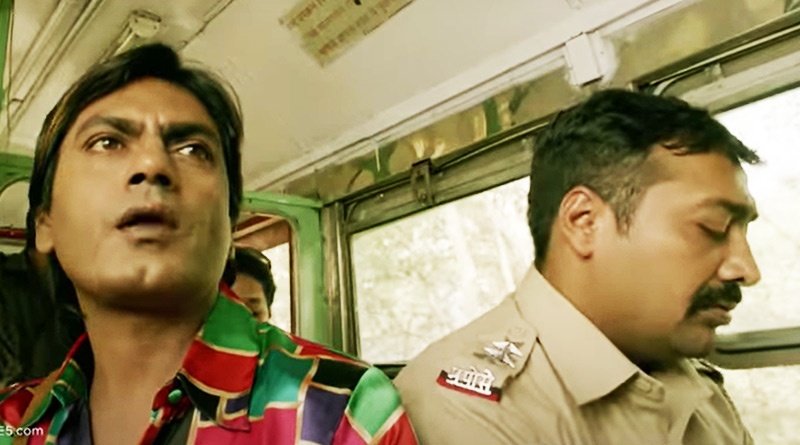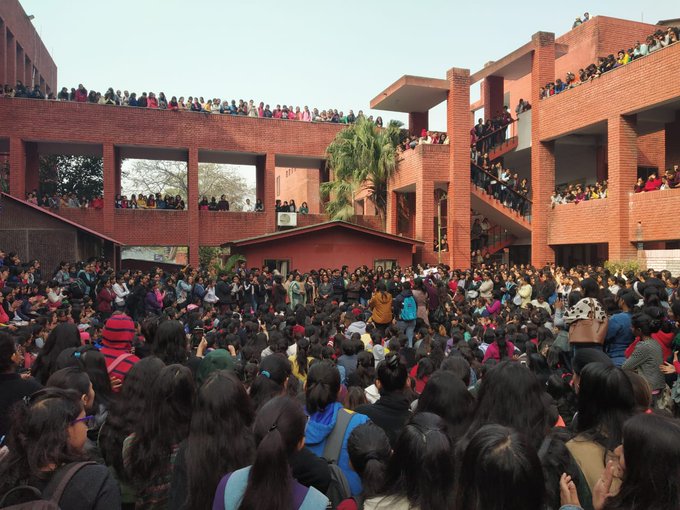Nil Batte Sannatta: Exploring the Complex Interplay of Struggle, Schooling and Success
Nil Batte Sannatta is a Hindi film directed by Ashwini Iyer about the trials and struggles of a mother-daughter duo who try against all odds to carve out a better future for themselves through education in spite of marginalization and poverty. The lead roles are played by Swara Bhaskar and Ria Shukla.
Richa Goswami is a PhD scholar at Tata Institute of Social Science, Mumbai.
Like a doctor’s son becomes a doctor, and an engineer’s son becomes an engineer, similarly, a maid’s son becomes a maid.
This matter of fact statement from the disillusioned character, Apeksha from the movie Nil Battey Sannata hits at the core of education and its goal of working towards an equitable society. This short essay reviews the film from the sociology of education point of view using the concepts of resistance and conformity.
Nil Battey Sannata is a family drama, which released in April 2016 directed by Ashwini Iyer. It is a film about a high school dropout household maid, a single mother and her desire to carve out a different destiny than her own for her daughter. The main roles are played by Swara Bhaskar and Ria Shukla.
Nil Battey Sannata tells the story of a mother and daughter living in the slums of Agra. Apeksha, the daughter a study in the state run school and is performing miserably in her studies, especially mathematics. Chanda, the single mother, works in four households to provide for her daughter and save money to invest in her education.
Chanda works at the house of a retired doctor, who now has a leisurely carefree life, perhaps as a result of higher education. There is an indication that Dr. Dewan herself comes from humble backgrounds and could study the medical degree owing to her own hard work and the reasonable fees being charged at that time. She compares it to today’s education system where a lot of money is needed to do the same courses.
Chanda in her desire to help Apeksha in performing reasonably well in mathematics makes efforts to arrange for tuition. After failing to do so and experiencing the frustration of not being able to help her daughter, she receives an out of the box idea from Dr. Dewan. Chanda herself is a high school dropout and that is an embarrassment for her daughter. Dr. Dewan encourages Chanda to complete her own high school education and support her daughter by both setting an example and becoming more capable in providing the much needed academic support. The film then goes through a touching sequence of Apeksha’s anger, which, is initially aimed at her mother’s decision to enroll in school and then towards her success in academics. The story reaches a happy ending when Apeksha through a dramatic sequence of events develops interest and confidence in her ability to learn mathematics and the mother and daughter finish senior secondary together.
The film presents a good story where the protagonist through the power of determination coupled with relentless hard work achieves something that most individuals like her are unable to. But at the same time it raises many questions regarding the education system; its goals, its problems and the possible solutions.
Social reproduction theories have explored the mechanisms by which education contributes towards maintaining social-class relations and how they impact both aspirations and outcomes for the children coming from disadvantaged backgrounds. Many sections of children, like girls, Dalits and tribal students, are constantly faced with systemic discrimination and find no place for themselves in the schools. Considerable research effort has gone into documenting the discriminatory treatment these children suffer at school. These are present at all levels from curriculum, textbooks, and classroom transactions to peer interactions.
Apeksha and Chanda in the film represent the two very different ways of looking at education and its related benefits. Apeksha and her friends are the typical working class children who feel that their chances of upward mobility are very slim, given their environment and thus have adapted aspirations for life. Pintu wants to become a driver like his father, Apeksha expects nothing more than the life of a housemaid for herself and for her friend Sweety, she sees an early marriage and early motherhood. This has led them to abide by a counter school culture and be defiant of the school rules, they come late to school, cheerfully receive punishment every day and refrain from paying attention towards classroom teaching. These acts of resisting the school culture and authority lead to the vicious circle of failure. They are also resistant towards the school headmaster, who is also their mathematics teacher and Amar, a hardworking classmate, derogatorily called ‘calculator’. They both, for them, are representatives of educated middle class or the school conformists and thus worthy of their opposition. The name calculator itself perhaps has the connotation of a non-thinking answer producing machine.
Chanda on the other hand, wants her daughter to have what she could not get and works very hard to make that happen. Perhaps because of her close proximity with Dr. Dewan, she has raised her educational aspirations for her daughter. Chanda represents the “conformists”. The film right from the beginning, shows Chanda struggling to encourage Apeksha to take on behavior valued by the school, like going to school on time, taking bath etc. she invokes her social contacts to support her mission like asking the neighbor to keep an eye on her daughter and ensure that she leaves for school on time and discussing with her employer the school performance and disinterest of her daughter and seek solutions.
The film portrays a very stark difference in the lifestyles of Chanda and Dr. Dewan. Chanda on one side is constantly running, struggling and sacrificing. Dr. Dewan on the other side gets up leisurely, spends time reading, shopping, and visiting relatives. The two women’s theory of learning is also very different from each other’s and is representative of the different cultures they are part of. Dr. Dewan as a learned person believes that everything can be learnt from books and Chanda, while pickling for her says, that things like pickling cannot be learnt from books and goes on to refer to what her grandmother used to say. This sharp difference between the two, instead of leading to feelings of jealousy, acts as inspiration for Chanda. This perhaps can be understood in two ways. Firstly, Dr. Dewan is old and retired, implying she has done her share of hard work and is now enjoying the hard earned retirement. Secondly, her relationship with Chanda is of kindness and affection almost like that of a mother-daughter.
The resistant and conformist approaches to education, that Apeksha and Chanda represent, almost seem irreconcilable and headed towards a life of continued deprivation for Apeksha and that of failure and frustration for Chanda. The peak of their approaches is reached when chanda decides to join the school and conforms with the image of an “ideal student” and Apeksha in her desire to resist any attempt towards education and filled with extreme rage and disrespect for her mother assumes that she is involved in illicit affairs and earning money through it. Being a film it has a happy ending where Apeksha not only clears SSC, but is able to later in life becomes an IAS. The film succeeds in telling a gripping story with interesting and nuanced portrayal of characters. With the help of Apeksha, Sweety and Pintu the film also succeeds in bringing out the struggles and frustrations of a large number of students attending state schools and their defense mechanisms.
The powerful statement from the film quoted in the beginning is reflective of the social reality of our country. The film had the potential of dealing with it in a more nuanced way. It could have brought in the complex school reality of Indian schools and classrooms; instead it chose to narrate a sanitized story. It sidestepped the class and cast biases that teachers working with disadvantaged children bring in or how the school culture makes a mockery of the lives of the children and how all this leads to their resistant attitude.
Education is like a coin, where the two sides represent diametrically opposite realities. One side represents the role of an equalizer, an instrument of social change. And the other side represents the structure of perpetuating inequalities in society. The reality of the first side merits pumping in funds for achieving universalization of education. And the second reality prods us to take a peek into the classrooms and work towards teacher capacity building,
The film brings to the fore the power of aspiration and hard work in overcoming one’s obstacles. Considering that this idea is both important and essential, still to an education student, it makes the solution of a structural problem very individualized. Unequal opportunity, experience and outcome in school education arise from the hierarchical structure of Indian society. Thus the solution cannot be only focused on the individual child and her family. In a way such solutions negate the need for seeking multipronged policy level solutions. I would like to end with the words of JP Naik (1979), eminent Indian educationist
There are three essential forms of power: political power, economic power and knowledge power. All these forms of power are obviously inter-related; and if we desire to have an equitable distribution of knowledge power, we can achieve our objective only if we take simultaneous steps to have an equitable distribution of political and economic powers as well.
Image Source : Nil Batte Sannatta Movie Poster
The New Leam has no external source of funding. For retaining its uniqueness, its high quality, its distinctive philosophy we wish to reduce the degree of dependence on corporate funding. We believe that if individuals like you come forward and SUPPORT THIS ENDEAVOR can make the magazine self-reliant in a very innovative way.














